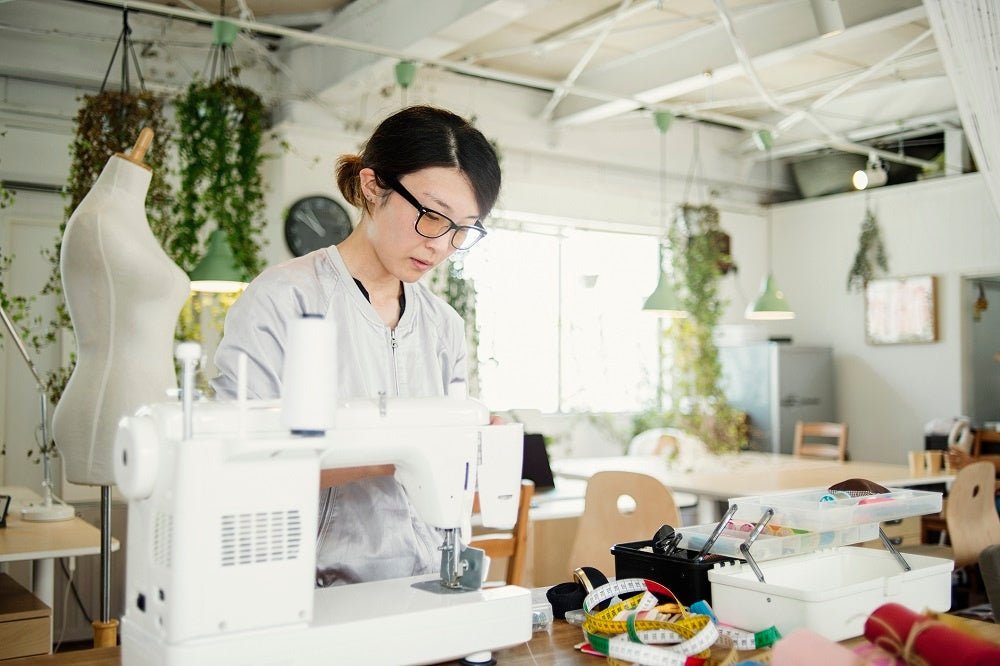
What Is Eco-Fashion And How To Be Responsibly Fashionable
Eco-fashion has become a big, booming business that is no longer limited to niche designers. Sustainable and recyclable materials are now making their way into boardrooms and onto catwalks. Just as eating organic went from niche market to expansive trend, sustainable fashion is becoming more readily available and affordable.
Tags:
Eco-fashion has become a big, booming business that is no longer limited to niche designers. Sustainable and recyclable materials are now making their way into boardrooms and onto catwalks. Just as eating organic went from niche market to expansive trend, sustainable fashion is becoming more readily available and affordable.
But what exactly is eco-fashion?
What is Eco-Fashion?
Eco is short for ecology, or the study of interactions between organisms and their environment. Eco-fashion is any brand or line that attempts to minimize the impact on the environment, and often the health of the consumers and the working conditions for the people that are making the clothes. Imagine organic cotton, durable, recyclable fabrics, plant-based dyes and a fair wage for the manufacturers and suppliers. In the best of conditions, ethical fashion sounds awesome. However, it is not quite as simple as that. Ethical fashion can be branded just by being sustainable, which means the crop used for making the garments can be regrown or replanted once it is harvested. There is also no such thing as a 100% eco-friendly piece of clothing, because all clothing takes water and energy.Beware of Greenwashing
You know that sustainable fashion is “in” when H&M gets in on the action. The budget brand has a sustainable line, which they call the Conscious Collection. But can we really look good and do good at the same time, as H&M says? H&M’s new green campaign doesn’t come without its critics, who suggest that disposable clothing is never going to be a solution for helping the planet. Fast fashion, at its very nature, is not known for making a positive environmental impact, even if H&M did set up a recycling program. To put it in perspective, Lucy Siegle, a journalist at The Guardian who writes about sustainability, estimates that it will take H&M up to 12 years to re-use or recycle 1,000 tons of clothing waste. Companies are looking for ways to improve this technology in the long-term. Meanwhile, H&M produces that same volume of clothing within days. Of course, H&M is not our only option. There are designers that have gotten in on the trend, including Anne Salvatore Epstein, who wanted a more organic lifestyle once she became pregnant with her child in 2005 and Stella McCartney, who is known for her vegan, ethical clothes that range from baby-doll dresses to chunky knit sweaters. Stella has been quoted as saying, “we address…ethical or ecological…questions in every other part of our lives except fashion. Mind-sets are changing, though, which is encouraging.”9 Sustainable Fashion Tips
It is quite hard to tell these days what is eco-friendly and what is just fashion. However, to stay conscious at all times can take quite a bit of homework. Below we outline some tips to help you stay responsibly fashionable:- Buy fewer, higher quality clothing. Reduce is the first of the 3 Rs, so do the planet a favor by buying fewer, better quality clothes. You may be spending more at first, but if you break it down to cost-per-wear, it's worth it. The fit will be better and the clothes will last longer than three washes of a fast fashion sweater.
- Repair loved garments. Greenpeace suggests that it may be better to repair your garments instead of recycling them and continuing the buying-purging cycle. The Waste and Resource Action Program (or WARP) agrees, estimating that extending the life of your clothes for just three months will lead to a 5-10% reduction in the carbon, water and waste footprints caused by an unsustainable rate of fashion production and consumption.
- Shop consignment stores. There are many fabulous finds at consignment stores. You can find new items that were one individual's buyers remorse, or gently loved designer clothing at low prices. Good for your wallet and the planet!
- Buy from your neighbors. A lot of cities now have Facebook buy and sell clothing groups that you can join. Browse through your neighbours clothing from the comfort of your home. You can even try to bargain for a better deal, trade clothes or sell your old garments for some extra cash.
- Create a capsule wardrobe. A capsule wardrobe is a collection of essential, timeless clothing items that you rotate with seasonal items. These wardrobes average around 30 pieces, including shoes and accessories. This ensures that you'll only wear clothes that you love and will decrease the time it takes to get dressed in the morning. Brass Clothing is one company who is setting out to achieve this for every woman.
- Buy vegan leather. The process of transforming animal skin into leather requires high levels of energy and toxic chemicals. Vegan leather not only cruelty-free, but it's better for the planet too.
- Shop from sustainable clothing brands. Everlane is a company that focuses on transparent pricing, high quality fabrics and sustainable manufacturing. Kowtow sells 100% certified organic and fairtrade clothing. For a list of more sustainable fashion brands, check out this list by the Style Bee.
- Organize a clothing swap. Organizing a clothing swap with your friends or coworkers is a fun way to socialize while recycling loved garments.
Would you like to be the first to hear about our new products and more? Sign up for our Nature’s Path Newsletter.

